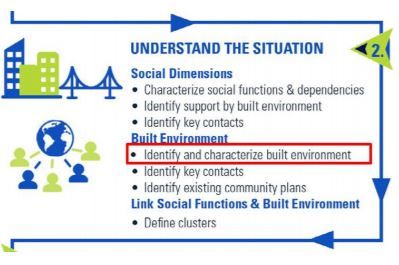by Brianna Crandall — January 13, 2017 — In support of the Community Resilience Planning Guide, the National Institute of Standards and Technology (NIST) Community Resilience Group has released two additional Community Resilience Planning Guide Briefs. These new Guide Briefs both focus on step two, “Understand the Situation,” of the six-step planning process outlined in the Community Resilience Planning Guide.

The new Guide Briefs both focus on step two, “Understand the Situation,” of the six-step planning process outlined in the Community Resilience Planning Guide.
The Guide Briefs were developed to provide further guidance to communities seeking to use the Community Resilience Planning Guide and the six-step process to plan for resilience. Below is additional information and links to the new Guide Briefs that have been released.
NIST Special Publication 1190GB-5 Guide Brief 5 — Assessing Energy System Dependencies
This Guide Brief focuses on understanding dependencies from an energy system perspective. It is intended to help the collaborative planning team understand where energy is a critical dependency for other systems in the community. A major aspect of characterizing the built environment is identifying key infrastructure dependencies that may exist. Some of these dependencies are obvious; others are not. The Guide Brief is also useful for planners who work with building inspection departments, planners for first responders, and planners who are responsible for shelters.
NIST Special Publication 1190GB-6 Guide Brief 6 — How Communities Can Work with Communication Service Providers to Understand Communication Systems
This Guide Brief focuses on assisting communities with respect to communication systems. When characterizing communication systems in a community, communities need to gain an understanding of both the service provider systems and their own systems. In some situations, communities may need to leverage communication service provider systems and their capabilities. In other cases, communities may have the capability to provide their own recovery resources. The primary intended audience for this Guide Brief is the portion of the collaborative planning team focused on understanding and improving recovery of communication systems.
These Guide Briefs and others can be found on the Community Resilience Planning Guide Briefs page, or by clicking on the specific links above.





